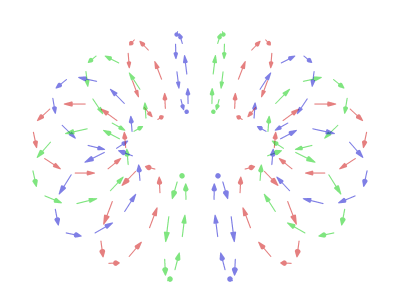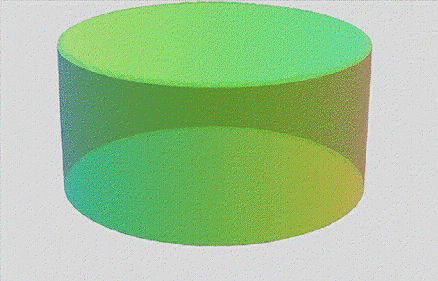Sorry for taking awhile. I've been trying to reconcile the following:

I realised that when we rotate into the 4th dimension that the Klein Strip would also appear to rotate in the opposite way with an in-place twist; and not just appear to inflate and deflate.
However when I add that to the equation I appear to get the above...
I'm still trying to reconcile that with my brain...
It appears that their is some sort of figure 8 motion occuring which may be why it seems to bounce and swap colours at the 90° and 270° mark...
Or it may be that opposite side is bleeding through because the graphing program doesn't know there is an opposite side and presents it as the current side...
I'm yet to figure it out...
I know we can get a similar effect with a piece of cardboard that is coloured one colour on one side and another colour on the opposite side.
If you hold this in front of your face and rotate it towards yourself you will see the first colour shrink to a line and then the second colour will come around and will start to grow then shrink (ie bounce).
It does this sudden colour change for the whole entire edge all at once which may be the equivalent to us seeing the whole surface (4D edge) change at once in our 3D slice of a Klein Strip.
It's interesting that if we did this to a 2Der with the cardboard instead standing vertical and spin it around a vertical axis the 2Der would see the shape flash from blue to red every 180° which is what we are seeing too.
So to my surprise the effect might be correct. Please remember though that I am depicting two halves of the one side. We still don't see the back unless we walk around to the back of the Klein strip.
So the animation may be correct? I must admit I just expected the revolution to continue in one direction for the full 360°. What do others think?
Still I haven't answered your questions yet. I was trying to understand the above. Hopefully soon...
Oh and the current parametric equations for in-place rotation are now:
x(u,v,t) = (R + r * (sin(v / 2) * sin(u + t) * cos(t) * cos(v / 2 + π/2) + cos(u + t) * cos(v / 2))) * sin(v)
y(u,v,t) = (R + r * (sin(v / 2) * sin(u + t) * cos(t) * cos(v / 2 + π/2) + cos(u + t) * cos(v / 2))) * cos(v)
z(u,v,t) = r * (sin(v / 2) * sin(u + t) * cos(t) * sin(v / 2 + π/2) + cos(u + t) * sin(v / 2))
I've used two sets of values for the other variables to produce the two colours:
1) -π/2 ≤ u ≤ π/2 (15 steps)
2) π/2 ≤ u ≤ 3π/2 (15 steps)
both) 0 ≤ v ≤ 2π (90 steps)
both) 0 ≤ t ≤ 2π (120 steps)






 I told you I was still finding out things too! I find it quite fascinating.
I told you I was still finding out things too! I find it quite fascinating.




















